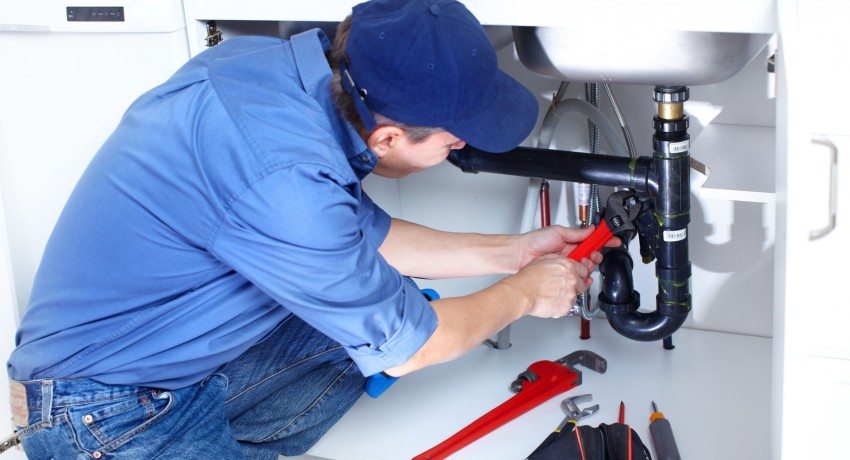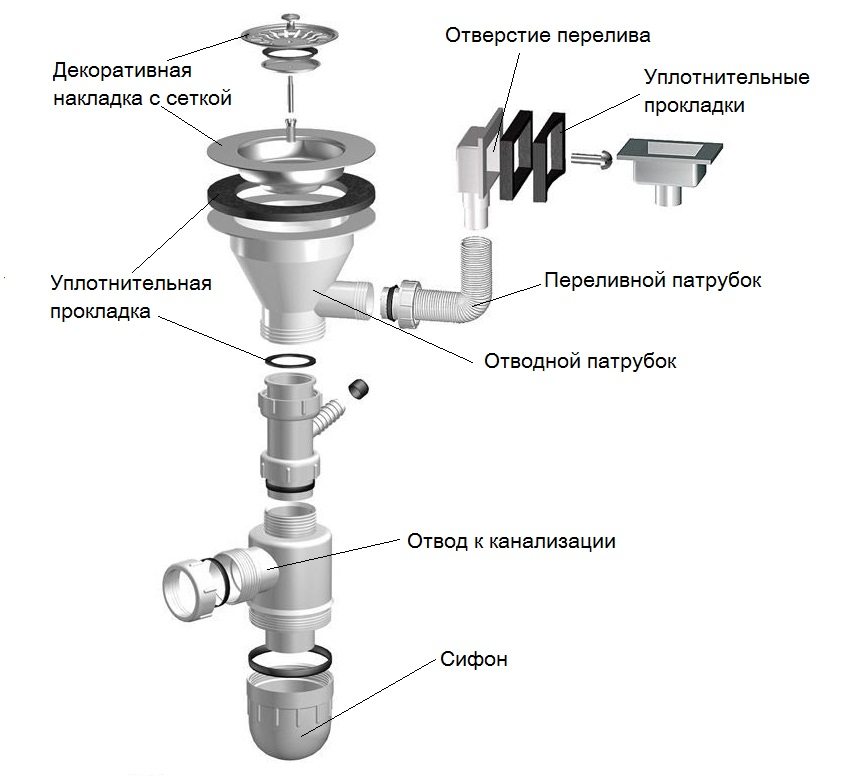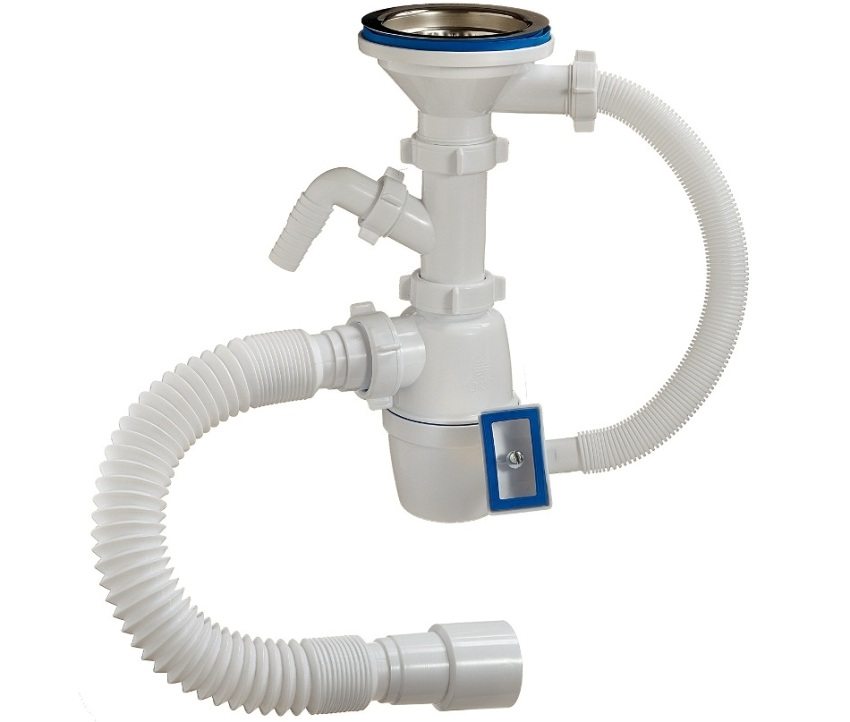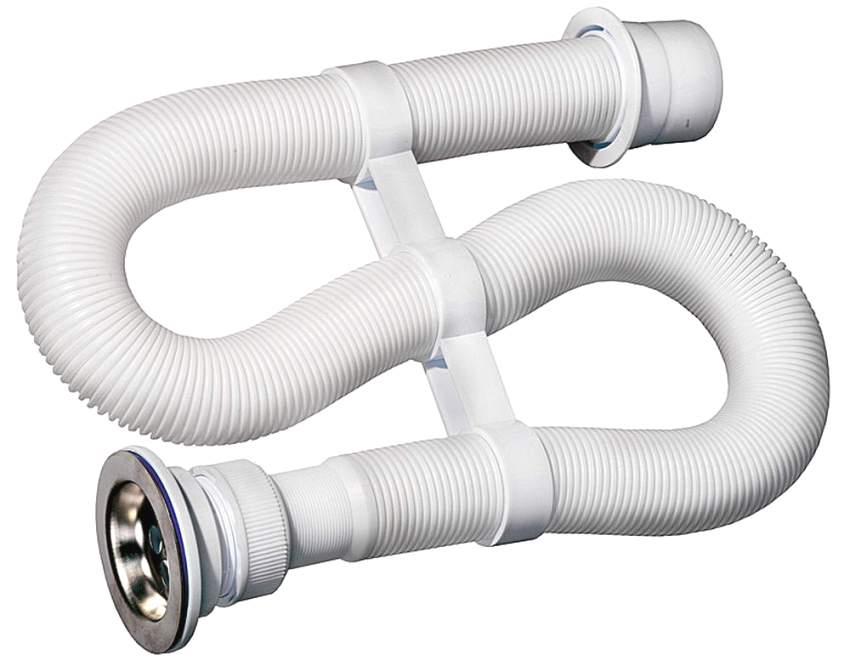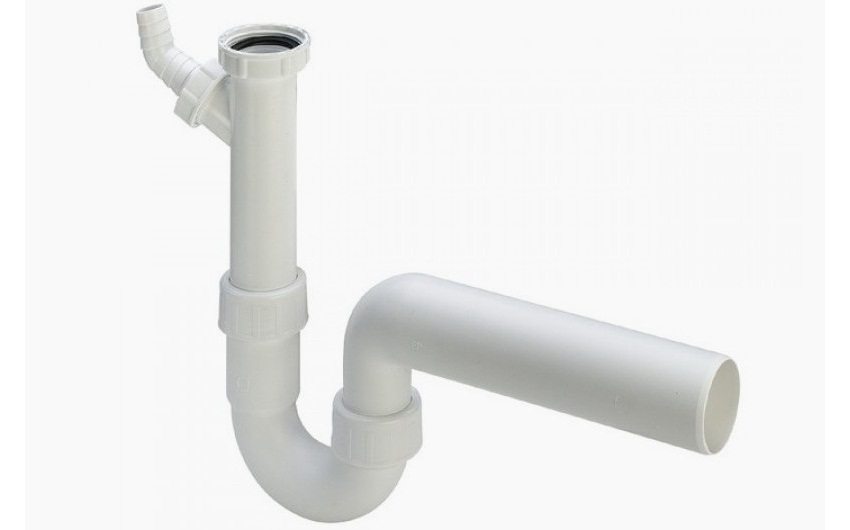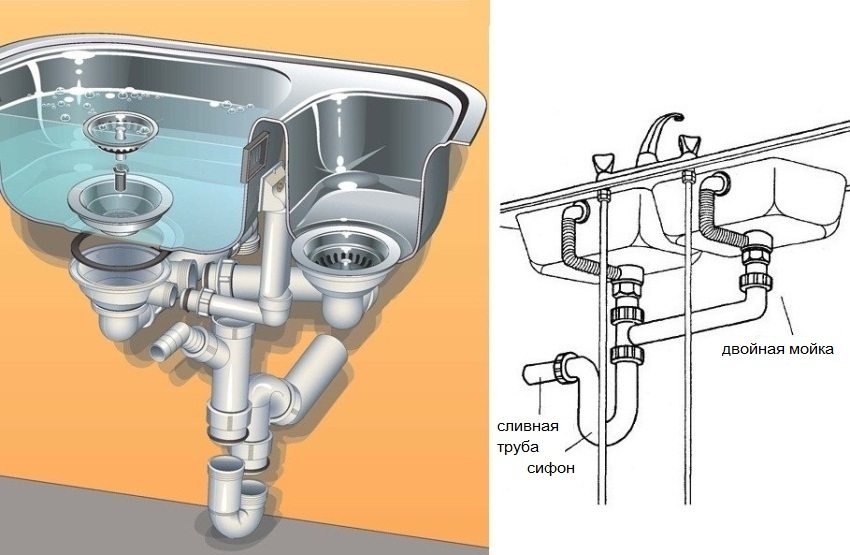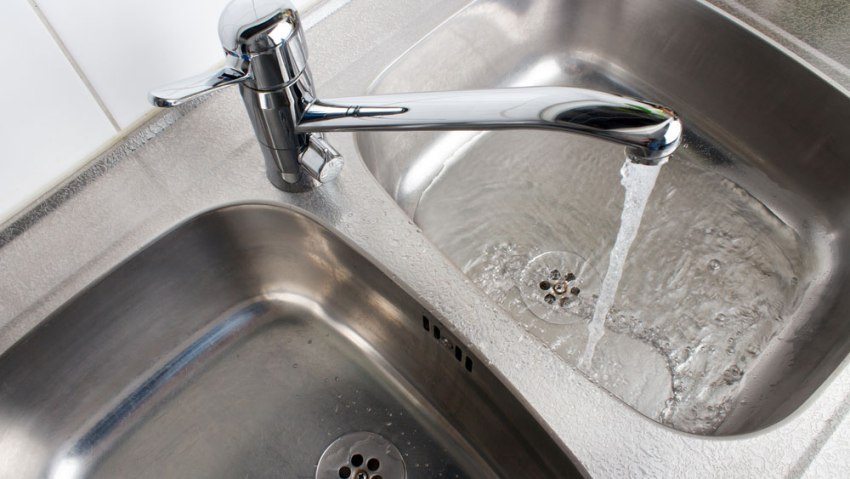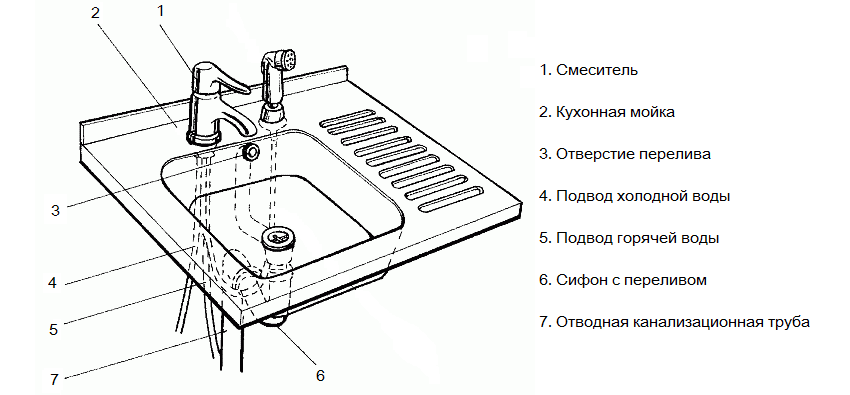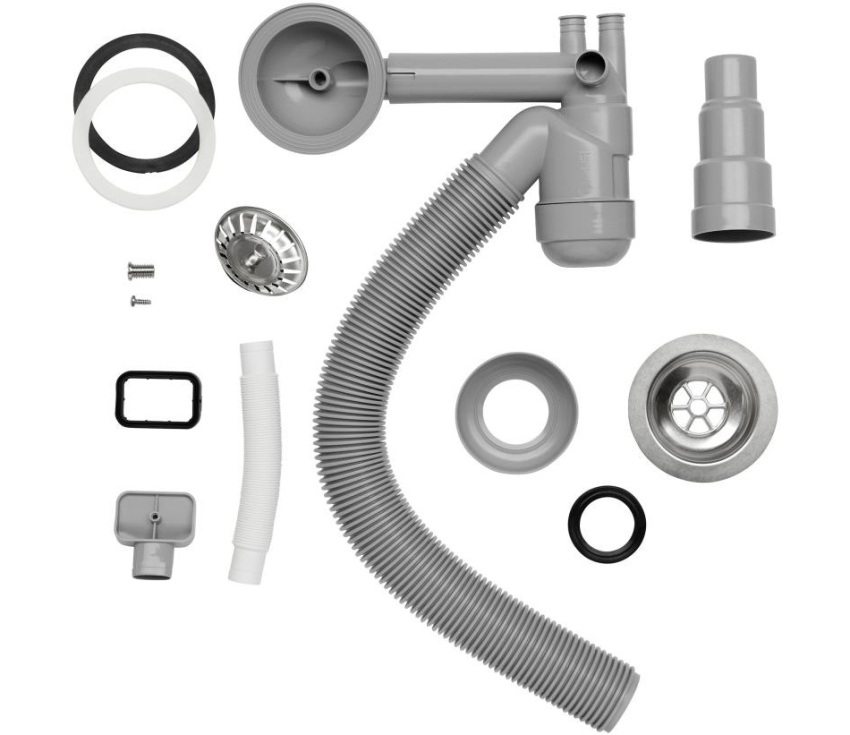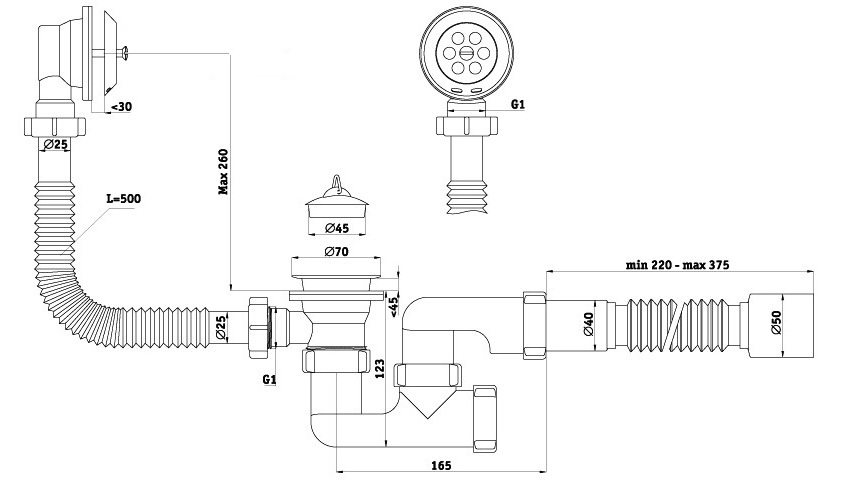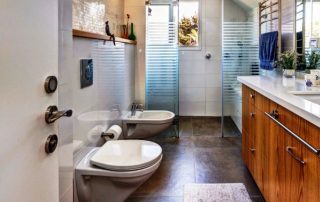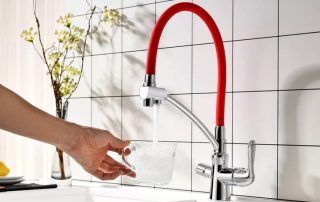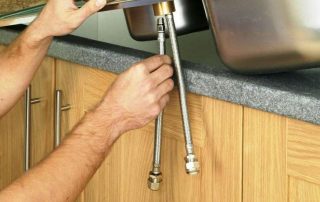The sink siphon with overflow is an important part of the sewer system. It is a curved pipe, at the bend of which there is always water. Siphon performs water seal function, that is, it creates a water barrier that prevents unpleasant sewer odors from entering the room. It is installed on almost all plumbing fixtures. When changing plumbing siphon also subject to replacement.
Content [Hide]
Varieties of siphons
The modern plumbing market can offer buyers siphons for the toilet, bath or sink. Three different types of water traps are used for under-sink installation:
- pipe;
- bottle;
- corrugated.
Bottle siphons
The drain device received this name due to the presence of a sump, which is shaped like a bottle. Two tubes extend from the middle part, one connects to the plumbing drain hole, and the second directly to the sewer. Bottle siphons for washbasins with overflow - ideal for installation under the washbasin. They have several advantages:
- the hydraulic valve is cleaned without complete dismantling;
- additional pipes can be connected to the device, for example, to drain the washing machine;
- in the siphon siphon siphon it is easy to find a valuable trifle accidentally missed.
We should also note the drawbacks. A bottle siphon requires a large number of connections, which can easily cause a leak.
Corrugated siphons
The simplest version of a siphon for a sink with an overflow is a corrugated curved plastic pipe, which is fixed with special clamps. The advantages of such a water barrier are as follows:
- the smallest number of docking elements to avoid leaks;
- plasticity and the possibility of stretching allow the hydraulic valve to be installed even away from the sink;
- quite easy installation and connection.
But such products also have disadvantages. Inside, such a sump has a corrugated surface, which causes more rapid clogging. To clean such a structure, it will need to be completely dismantled. Manufacturers can also offer combined models. There are bottle-type siphons equipped with a corrugation leading to the sewer.
Tubular siphons
Such products are most often installed under baths, but also for installation under a conventional or overhead sink they fit perfectly.A rigid curved tube is a fairly strong construction. But installing it is much more difficult than the corrugated version. The main disadvantage of this option is considered to be rather large. The tubular siphon takes up quite a lot of space. If you plan to install a small sink, then you should choose another model.
Specialized siphons
If non-standard washbasins or sinks are used for installation in an apartment, then special siphons are needed for them. Quite often, with such sinks, sedimentation tanks with all branch pipes are included, then there is no need to look for and buy a suitable water seal separately.
An example of special products is the double siphon designed for installation under a sink with two bowls. This option is much more economical than installing two separate straps.
Overflow purpose
An overflow is called an additional pipe, thanks to which water, having reached its maximum level, can drain into the sewer. Such equipment is a kind of protection against overflowing water over the edge of the sink if it cannot go out in the usual way. Additional opening in sinks or washbasins invented not so long ago. This is an excellent protection against flooding. Overflow valves are currently in the greatest demand. Almost all types of siphons are equipped with this additional function.
How to choose a sink siphon with overflow?
The first thing to look for is the material. Manufacturers offer plastic or metal products. A sink siphon with a plastic overflow is the most economical option, since its price is much lower. It is strong enough, does not corrode. Such a water seal is easy to install, and, if necessary, to dismantle it. Metal products can be made of cast iron or various bronze-brass alloys. Such a strapping is significantly more expensive and much more difficult to install due to the fact that it does not stretch as much as corrugated plastic.
Related article:
Sink food waste disposer: what it is and why is it needed in the kitchen. Installation and operation rules. Main characteristics and parameters of chopper selection, manufacturers overview.
If there is an overflow hole in the sink, then you need to clarify the presence of an additional tube in the kit, through which a spare drain is carried out. Installing a conventional siphon on a sink with such an opening can cause flooding of the apartment, since the water will have nowhere to go.
Before buying a hydraulic valve, you need to decide where the siphon will be located: in a cabinet or sink leg, or it will be in plain sight. For the first option, the simplest plastic model is suitable, it can be quickly replaced if necessary. If the entire drainage system is outside, then you can choose a decorative option. Modern manufacturers will offer ready-made straps with chrome plating or non-ferrous metal.
Helpful advice! When choosing a suitable hydraulic valve model, it is necessary to check with the seller the capacity of the siphon. If it is small, then the flood in the apartment is guaranteed.
Siphon complete set using the example of a plastic device
To understand how to properly assemble a hydraulic valve, it is worth considering its constituent elements. Usually the kit includes:
- sump (body);
- branch pipe (outlet);
- rubber gaskets and plugs;
- plastic nuts with a diameter of 32 mm;
- tapered rubber cuffs (32 mm);
- clamping screw;
- external washbasin cover with grill;
- overflow tube.
The rubber gaskets included in the kit must be strong and reliable.If their thickness is less than 3-5 mm, then it is worth purchasing separately more dense ones. In addition, you will need to buy an adapter for the sewer pipe if the outlet at the siphon has a diameter of less than 50 mm.
Helpful advice! You can purchase siphons with a stepped outlet to the sewer. In this case, you can simply cut off the extra steps and buy an additional sealing rubber.
Installing a siphon for a sink with overflow
Usually, installation instructions are included with the sink harness kit. A detailed diagram will allow you to independently install a water seal without errors and special problems. Installation procedure:
- First, check the fit of the grate on the drain hole. A suitable mesh should be slightly recessed. When this element is set high, the water from the sink will not completely drain;
- a special gasket is used to install the grille. On the back side of the sink, an outlet pipe with a thick cuff put on it is brought in and the docking screw is tightened;
- then a nut and a tapered gasket are put on the branch pipe. Its correct position implies a small gap of 3-5 mm between it and the edge of the outlet;
- after that, the branch pipe is inserted directly into the siphon itself and all elements are tightened with nuts;
Helpful advice! Do not use a wrench when tightening the nuts. The screed should be done by hand to avoid undue stress on the plastic elements.
- if there is an additional branch for washing machine, which will not be used yet, it should be closed with a special plug;
- after that, a corrugated pipe is attached to the lower outlet of the siphon, which is subsequently connected to the sewer line;
- The additional overflow tap is fitted with a tube and connected to the small top hole in the sink.
After completing the installation, it is necessary to check the operability of the entire structure. To do this, turn on the water at maximum power and check all the connecting joints. If the drops of water did not appear anywhere, then the installation was done efficiently. Sometimes, during assembly, it may be necessary to lubricate some elements with a sealant, but in the event of a water blockage, it will not be possible to disassemble such a structure quickly.
